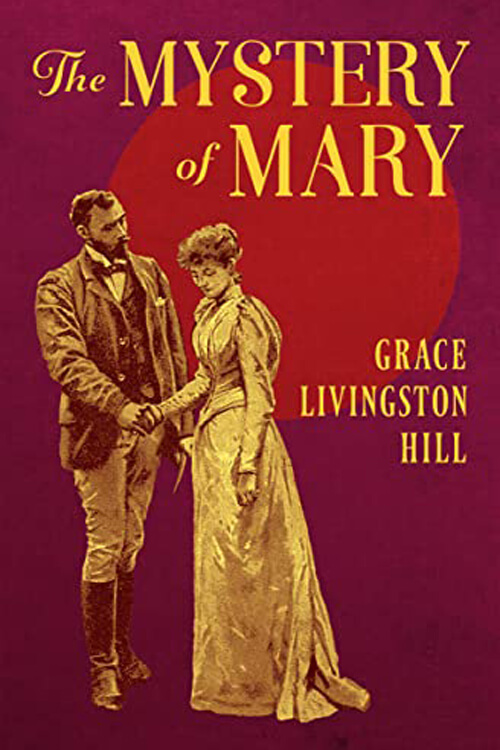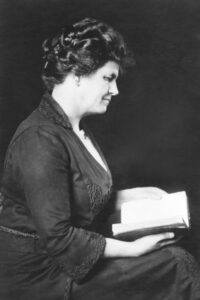
The Mystery of Mary
It was five minutes of six, and as the young man looked back at the long flight of steps that led to the bridge across the tracks, a delicate penciling of electric light flashed into outline against the city’s deepening dusk, emphasizing the lateness of the hour. He had a dinner engagement at seven, and it was yet some distance to his home, where a rapid toilet must be made if he were to arrive on time.
The stairway was long, and many people were thronging it. A shorter cut led down along the tracks under the bridge and up the grassy embankment. It would bring him a whole block nearer home, and a line of cabs was standing over at the corner just above the bridge. It was against the rules to walk beside the tracks—there was a large sign to that effect in front of him—but it would save five minutes. He scanned the platform hastily to see if any officials were in sight, then bolted down the darkening tracks.
Under the center of the bridge a slight noise behind him, as of soft, hurrying footsteps, caught his attention, and a woman’s voice broke upon his startled senses.
“Please don’t stop, nor look around,” it said, and the owner caught up with him now in the shadow. “But will you kindly let me walk beside you for a moment, till you can show me how to get out of this dreadful place? I am very much frightened, and I’m afraid I shall be followed. Will you tell me where I can go to hide?”
After an instant’s astonished pause, he obeyed her and kept on, making room for her to walk beside him, while he took the place next to the tracks. He was aware, too, of the low rumble of a train, coming from the mouth of the tunnel.
His companion had gasped for breath, but began again in a tone of apology:
“I saw you were a gentleman, and I didn’t know what to do. I thought you would help me to get somewhere quickly.”
Just then the fiery eye of the oncoming train burst from the tunnel ahead. Instinctively, the young man caught his companion’s arm and drew her forward to the embankment beyond the bridge, holding her, startled and trembling, as the screaming train tore past them.
Read or download Book
Grace Livingston Hill
Grace Livingston Hill was born in Wellsville, New York to Marcia Macdonald Livingston and her husband, Presbyterian minister, Rev. Charles Montgomery Livingston.
Biography.
Both were writers, as was her aunt, Isabella Macdonald Alden, who wrote under the pseudonym “Pansy.” Hill’s writing career began as a child in the 1870s, writing short stories for her aunt’s weekly children’s publication, The Pansy.
Her first story printed in book form was The Esselstynes, which was published in 1877 as part of the “Mother’s Boys and Girls Library” by D. Lothrop & Company. A Chautauqua Idyl, her first book as a young adult, was written in 1887 to earn enough money for a family trip from her Florida home to the summer Chautauqua gathering at Chautauqua, New York. This illustrated allegory of a Chautauqua gathering held by the flowers, trees, and animals was published in time to be offered for sale that summer and brought enough earnings to take the family there. Several books written in collaboration with her family followed in the early 1890s, as well as her only children’s book, A Little Servant. Lack of funds was a frequent motivator, particularly after the death of her first husband left her with two small children and no income other than that from her writing. After the death of Hill’s father less than a year later, her mother came to live with her. This prompted Hill to write more frequently.
During and after her failed ten-year marriage to her second husband Flavius Josephus Lutz, a church organist 15 years her junior, she continued to write to support her children and mother. She stopped using the Lutz surname after they parted ways in May 1914. Although many of her earlier novels were specifically intended to proselytize, Hill’s publishers frequently removed overt references to religious themes. After her publishers realized the popularity of her books, references to religious topics were allowed to remain, although she later modified her writing style to appeal to a more secular audience.
The last Grace Livingston Hill book, Mary Arden, was finished by her daughter, Ruth Hill Munce, writing under the name of Ruth Livingston Hill, and published in 1948.






